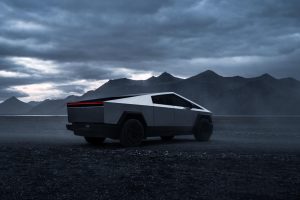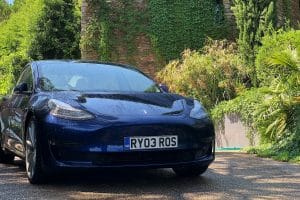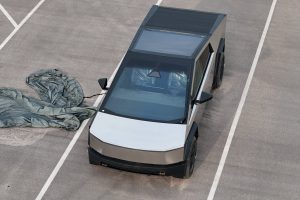Tesla pulled out all the stops during China’s International Consumer Goods Fair. The Cybervault, Mebagpack, and Optimus—the Tesla bot—were all part of the exhibit.
Tesla’s exhibit in China focused on the company’s Master Plan Part 3. The three main components of Tesla’s next phase are meeting electricity demand, establishing renewable electricity supply, and investing in material development and next-level manufacturing.
Electricity Demand & Supply
Meeting electricity demand by providing supply from sustainable resources is central to the company’s future goals. As such, it is fitting that the Megapack was featured at the exhibit in China.
Earlier this week, Tesla announced the construction of a Megapack factory in China located in Shanghai’s Lingang area. Construction on Tesla’s Megapack factory in China is expected to start in the third quarter of this year. Tesla estimated an initial production capacity of 10,000 units per year or nearly 40 kWh worth of energy storage from its Megafactory in China. Production is expected to start at the beginning of Q2 2024.
In line with meeting electricity demand, the Tesla Cybervault also appeared in the company’s exhibit in China. The Cybervault is clearly inspired by Tesla’s Cybertruck. The home EV charger pile has a similar shape to Tesla’s pickup truck and appears to be made of the same material as the Cybertruck’s exoskeleton. The Cybervault is a little bit bigger than Tesla’s original wall connector but might make up for its size with its design.
In Master Plan Part 3, Tesla emphasizes the importance of having EV chargers available at home and the workplace to supplement charging stations. The Cybervault is an excellent way to generate interest in home-charging solutions for electric vehicles.
Material & Manufacturing Investments
Tesla dedicated a whole section in its Master Plan Part 3 to the investment required for the materials it needs to reach its goals.
Tesla identifies a few materials that need significant capacity growth to reach a sustainable energy economy. In the mining industry, Tesla believes nickel, lithium, graphite, and copper mining need to undergo some capacity growth. While in the refining industry, nickel, lithium graphite, cobalt, copper, and battery-grade iron and manganese need some more attention.
Manufacturing investments go hand-in-hand with investments in materials. The company’s work on the Tesla bot seems to directly connect to its manufacturing goals.
Tesla has an ambitious vehicle sale goal of for its next phase. It also plans to launch an all-electric van, bus, and a compact vehicle. It will take a lot of manpower to produce and run the factories necessary to build and deliver 89 million units—and that might be how the Tesla bot fits into Master Plan Part 3.
Elon Musk has stated that the Tesla bot will address human labor shortage in the future. The company predicts that Optimus could help with boring, repetitive tasks or dangerous work.
“[The Tesla Bot] has the potential to be a generalized substitute for human labor over time. The foundation of the economy is labor. Capital equipment is essentially distilled labor… The fundamental constraint is labor. There are not enough people. I can’t emphasize this enough,” Musk said during an interview.





